Real time video encoding is the future
Jen-Hsun then went onto talk about what his company achieved with the GeForce 8800 – not just from a graphics perspective, but also on the general purpose parallel computing front with CUDA. “G80 with CUDA was the first product in our programmable graphics era. . . . We're about to release the next generation, as we have a new generation of architectures every year. After that, we'll see the next generation – we will likely be two architecture generations away before we see the mythical product called Larrabee.“Of course, our approach is very different than Larrabee's, as we're going to add capability on top of our GPUs. We're going to add features all the time, we don't take away features. We don't have to take an architecture detour the way that Itanium did from x86 32-bit.
“Frankly, the better answer was—and Intel ultimately supported it—64-bit x86, so that you could bring along all of the investments of the past. As you know, silicon and hardware is not where the vast majority of the investment in the industry is. Software is where the investment of the industry is. Software investment and architectural installed base are what made great architectures and great franchises.”
The last part of Huang’s statement is remarkably similar to what both Renee James and Andrew Chien had to say during their keynotes at IDF in Shanghai. James talked a lot about software unlocking the power of Intel’s hardware and how the chip giant is working with the development community to fully utilise the capabilities of its hardware. On the other hand, Chien’s keynote focused on the digital transformation and he made a lot of references to software and developing tools to help developers program for massively parallel processors before saying that “software unlocks the power of hardware.”
During IDF, I also had the chance to sit down for a one-on-one interview with Andrew Chien. We talked about how programmable the current generation GPUs are because they’re largely unified and fully generalised processing powerhouses – Chien claimed that existing GPUs still weren't programmable enough because, surprise surprise, they don't use IA.
"While current graphics pipelines are converging onto more flexible designs, they're still not where they need to be yet," said Chien. "IA provides the flexibility required for future workloads, and developers are familiar with programming for this."
But what about CUDA? After all, it's something that Nvidia has been pushing (and developers have been excited about) since the launch of GeForce 8800 GTX almost 18 months ago now. When we pushed Chien further, he admitted that CUDA was a good step forwards for parallel programming, but felt that Intel's Ct parallel programming model would offer even more flexibility for developers because it used IA.
It wasn't surprising to hear him go back to the IA debate again – the problem is that hardware for Ct-based programs won't be available for about a year (at the very least) and that would mean that CUDA has already had nearly three years to establish itself in the market.
One software application that was shown off during the Analyst Day was RapiHD – a video encoder designed to run on the GPU using CUDA. Sam Blackman, CEO of Elemental Technologies, the company behind RapiHD, showed a GeForce 8800M GTS running an h.264 video encode completing around 10 times faster than a quad-core Intel CPU. The software will be available in August or September and will be price competitive with current video encoders – expect it to be around $50 US for the standard version.
Jen-Hsun hailed this as the first killer application for CUDA before going onto talk about the era of heterogeneous computing. He wants video encoding to be instantaneous and the good thing for Nvidia is that Blackman said that RapiHD scales linearly across the number of stream processors available, meaning you can expect to see double the performance if there is twice the processing power available. “If you’ve got 128 stream processors, it’ll run twice as fast as if you’ve got 64 stream processors [in your system],” he said.
With applications like this, Nvidia’s CEO believes that GPUs like those in the GeForce 8 and 9 series' are exactly what Intel believes the industry needs – they’re programmable, unified and Nvidia has sold over 50 million ‘CUDA-enabled’ GPUs, which makes them fairly widespread although obviously not as ubiquitous as IA CPUs. Huang said that he expects to have shipped over 100 million CUDA-enabled GPUs by the end of 2008 and with what we’re told is a barrage of CUDA-optimised software arriving later this year, the paradigm might be about to change.

MSI MPG Velox 100R Chassis Review
October 14 2021 | 15:04


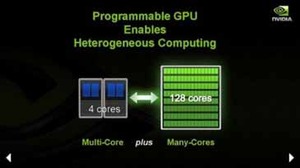
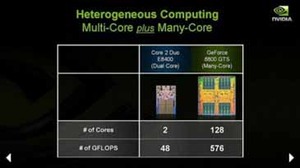

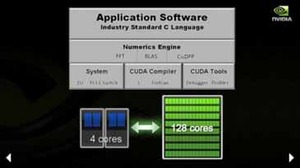
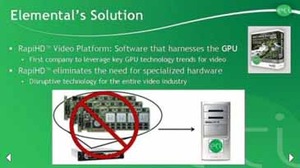

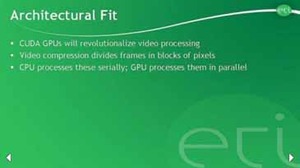
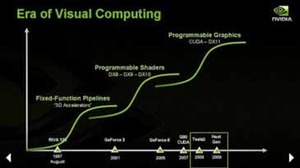







Want to comment? Please log in.